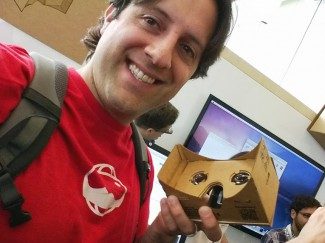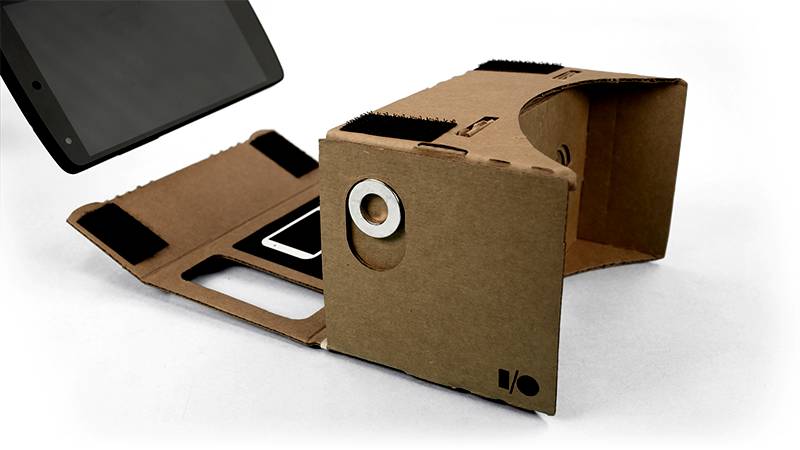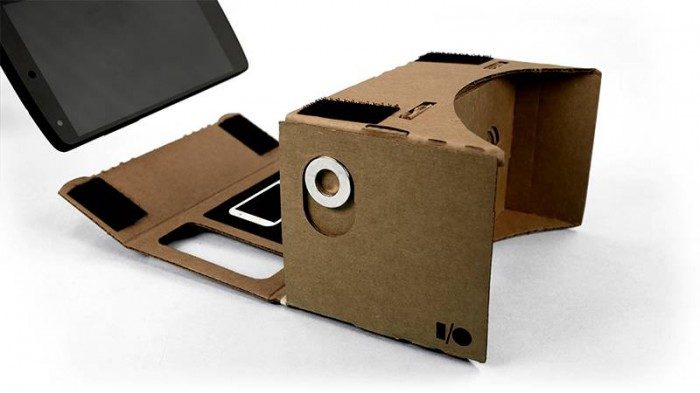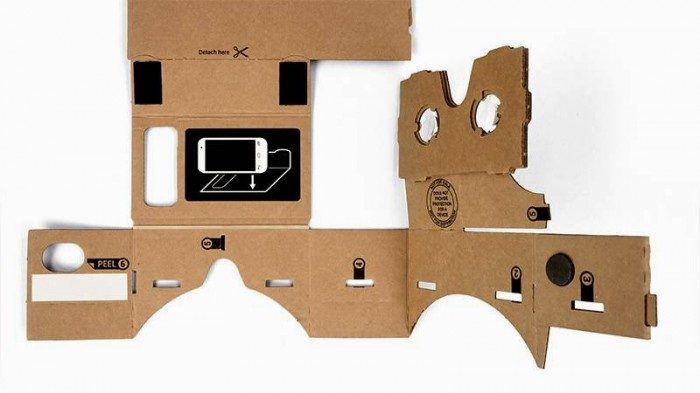At this week’s Google IO 2014, the company’s annual developer conference, the search giant is handing out ‘Cardboard’, a low-cost VR headset adapter for smartphones. The company is also making freely available an open ‘VR Toolkit’ and SDK to enable developers to build consistent virtual reality experiences for Android.

Google is throwing its hat into the VR ring with a project that appears to be designed to bolster and bring structure to the world of VR content on Android. Right now there are a bevy of VR smartphone adapters, which have to adapt to a wide range of potential phones, along with a mess content that may or may not work for a given hardware combination.
Cardboard, which the company appears to have handed out to thousands of Google IO attendees today, is a low-cost VR smartphone adapter that’s literally made out of cardboard. “We want everyone to experience virtual reality in a simple, fun, and inexpensive way. That’s the goal of the Cardboard project,” Google writes on the project’s website.
In addition to the Cardboard kit, Google has simple plans for anyone to construct their own DIY Cardboard VR smartphone adapter. The company has launched an Android app which includes several experiences to inspire developers to create content using their newly released VR Toolkit. The Cardboard app includes the following demos:
- Earth: Fly where your fancy takes you on Google Earth.
- Tour Guide: Visit Versailles with a local guide.
- YouTube: Watch popular YouTube videos on a massive screen.
- Exhibit: Examine cultural artifacts from every angle.
- Photo Sphere: Look around the photo spheres you’ve captured.
- Street Vue: Drive through Paris on a summer day.
- Windy Day: Follow the story (and the hat) in this interactive animated short from Spotlight Stories.

The VR Toolkit is an open-source SDK which Google says ” makes writing VR software as simple as building a web or mobile app.”
The VR Toolkit enables developers familiar with OpenGL to quickly start creating VR applications. The toolkit simplifies many common VR development tasks, including:
Lens distortion correction.
- Head tracking
- 3D calibration
- Side-by-side rendering
- Stereo geometry configuration
- User input event handling
This story is breaking, more info to come. Google will be holding a talk about VR on Android called ‘Field of View’ tomorrow at 10am PST, though there is no stream available.
Motion sensors on smartphones can be used to create amazing user experiences, such as 360 degree viewing of content (Spotlight Stories, StreetView panoramas, Photo spheres, etc.) or intuitive panoramic image capture. In this session, we demonstrate a range of interesting new experiences and give a deep dive into the underlying technical principles. We discuss sensor fusion on Android, creation and rendering of content, and user interaction fundamentals.









